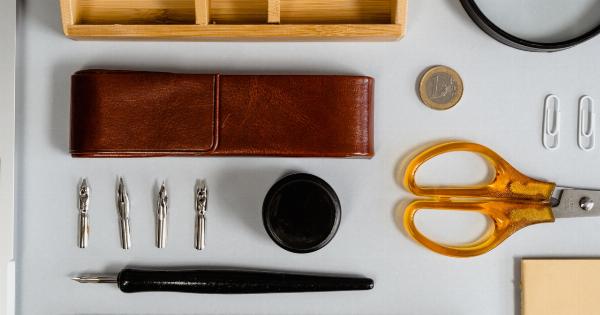When it comes to grooming and styling our hair, many of us rely on hair scissors to achieve the desired look.
Whether you are a professional hairstylist or simply trimming your own hair at home, it is essential to prioritize safety practices to prevent accidents and injuries. In this article, we will discuss some crucial safety tips that should be followed when using hair scissors.
1. Choose the Right Scissors for the Job
The first step to ensuring safety while using hair scissors is to select the right tool for the job. Hair scissors come in various types and sizes, each designed for specific purposes.
Thinning scissors, straight scissors, and blending scissors all serve different functions. It is essential to choose the appropriate pair of scissors based on the task at hand.
2. Keep Your Scissors Clean and Sharp
Regular maintenance of your hair scissors is crucial for optimal performance and safety. Make sure to keep your scissors clean by wiping them down after each use. Additionally, it is important to keep them sharp.
Dull scissors can slip or pull on the hair, increasing the risk of accidents. Regularly sharpen your scissors or have them professionally serviced to ensure their sharpness.
3. Work in a Well-Lit Area
Proper lighting is essential when using hair scissors to ensure precision and prevent mistakes. Working in a well-lit area helps you see the hair clearly and makes it easier to achieve the desired results.
Avoid working in dimly lit environments, as it can lead to uneven cuts or possible injuries.
4. Use the Right Technique
Using the correct technique while cutting hair plays a crucial role in maintaining safety. It is important to hold the scissors correctly, with your index and middle fingers inserted through the handles and your thumb resting on the other handle.
This grip provides stability and control over the scissors and reduces the risk of accidental slips.
5. Start with Small Sections
When cutting hair, it is always recommended to start with smaller sections, especially if you are a beginner. This allows for better control and reduces the chances of making mistakes or cutting off more hair than intended.
Starting small also helps you get a feel for the scissors and the desired length, making it easier to adjust as needed.
6. Avoid Overreaching
Overreaching while using hair scissors can lead to strain on your hands, wrists, and arms. This strain can result in discomfort or even injuries such as tendinitis. To prevent this, position yourself comfortably and avoid overextending your reach.
If necessary, move around the individual’s head rather than straining your arm to reach a particular section of hair.
7. Take Breaks
Long periods of continuous scissor work can cause fatigue and decrease concentration, increasing the risk of accidents. It is important to take regular breaks to rest your hands, stretch your muscles, and regain focus.
This practice not only prevents injuries but also ensures better results as you work with a refreshed mind.
8. Be Cautious when Handling Scissors
When not using hair scissors, be cautious in handling them to avoid accidental injuries. Always store them in a safe place, such as a scissor holster or a dedicated storage case.
Avoid leaving them lying around where they can be knocked over or where someone might accidentally grab the blades.
9. Educate Yourself on Safety Measures
To ensure maximum safety while using hair scissors, it is important to educate yourself on proper techniques and safety measures.
Attend seminars, workshops, or training sessions conducted by professionals to learn about the latest safety guidelines and best practices. Stay updated with safety recommendations from reputable sources to enhance your knowledge and skills.
10. Seek Professional Help if Unsure
If you are unsure about cutting your hair or someone else’s hair, it is always best to seek professional help. Professional hairstylists are trained in using hair scissors safely and have the necessary expertise to create the desired hairstyle.
Do not hesitate to reach out to a professional if you feel uncertain or lack confidence in your own abilities.
By following these essential safety practices, you can ensure a safe and satisfying experience when using hair scissors.
Prioritizing safety not only protects you from accidents and injuries but also helps you achieve the desired hairstyle with precision and confidence.






























